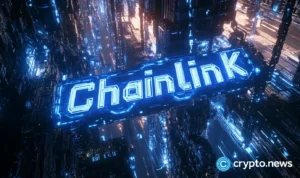XRP is powering Ripple’s bold challenge to SWIFT’s outdated payment system, delivering blazing-fast, low-cost, and transparent cross-border transactions through blockchain and stablecoin innovation.
Ripple Unveils XRP Solution While SWIFT Struggles With Outdated Payment Rails
Ripple shared in a blog post on May 28 that blockchain technology and the digital asset XRP could help resolve many of the longstanding problems in cross-border payments, particularly those linked to the Society for Worldwide Interbank Financial Telecommunication (SWIFT) system. The company called attention to the fragility of traditional rails, where manual processes still dominate global money movement:
Most cross border payments still rely on manual processes. A typo in an account number, an incorrect SWIFT code or incomplete payment instructions can all cause a transaction to fail.
“Failed payments don’t just waste time, they also incur costs, create operational headaches and can strain relationships with partners or customers awaiting funds. Reducing manual touchpoints and increasing automation are key to minimizing these risks,” Ripple noted.
The crypto firm emphasized that these outdated systems, which typically rely on multiple intermediaries and correspondent banks, are prone to delays, errors, and a lack of transparency. Payments can pass through as many as five institutions before reaching their destination, a process that introduces uncertainty and increases fees. This system, Ripple argued, is misaligned with the pace of modern commerce and the growing needs of businesses operating globally. Inconsistent messaging standards, foreign exchange markups, and regulatory complexity all contribute to what the firm describes as an inefficient and risky ecosystem for cross-border transactions.
In response, Ripple promoted its blockchain-based Ripple Payments solution as a modern alternative. “Ripple Payments offers a cross-border stablecoin payment solution that is a modern alternative to traditional cross border payment rails,” the company explained, elaborating:
It leverages blockchain and digital assets such as XRP and stablecoins such as Ripple USD (RLUSD) to provide businesses with a powerful solution for quickly, reliably and affordably sending and receiving stablecoin payments across borders.
With access to a global payout network spanning over 90% of the world’s foreign exchange markets, Ripple claims its platform offers real-time settlement, fee transparency, and lower operational risk. While critics continue to raise concerns around digital asset regulation, Ripple and other blockchain advocates maintain that distributed ledger technology offers a faster, more inclusive future for international payments.
Read the full article here










